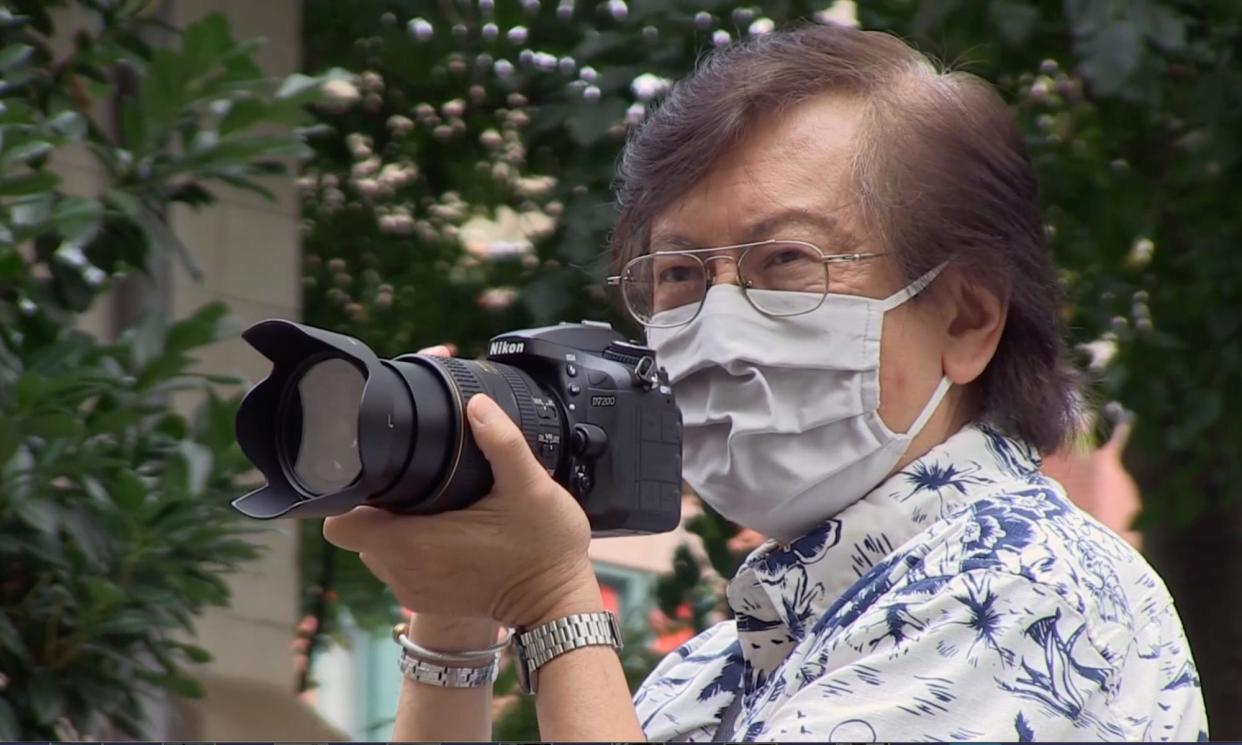‘I’m practicing photographic justice’: Corky Lee’s portraits of Asian American life

Corky Lee spent decades photographing Asian American life, in New York and across the US, capturing the rise of the Asian American movement as well as everyday happenings in immigrant communities often overlooked by the powers that be.
He saw his calling as more than just observing and documenting – he was righting a wrong by immortalizing Asian Americans in the civic makeup of the US.
“In all my photographs, I’m trying to include pages that should be in American history books, that have been omitted,” he said. “I’m practicing photographic justice.”
Photographic Justice: The Corky Lee Story, a documentary opening in New York on Friday, explores the life and photography of Lee, who died in 2021 from Covid-19. Through his own words and through commentary from a number of well-known figures in the Asian American community, the documentary delves into the lasting impact of Lee’s work – and the importance of bearing witness on a community level.
“Corky helped change the American landscape through his lens,” Jennifer Takaki, the film’s director, said in an interview. “He had the knowledge of American history and the insight of a community organizer, so he could offer insight into a community that he was personally involved with, but also documented in a way to show that they were larger pieces missing from American history.”
Takaki first met Lee in 2003, at an event at the John Jay College of Criminal Justice in New York. She asked him where the bathroom was. He proceeded to recount for her the history of the building in which they stood. That was just who Lee was – through his years photographing Asian American events around New York, he had accumulated a vast knowledge of local history and lore. “He is institutional memory,” author Joann Lee said in the documentary. “A walking encyclopedia.”
Takaki had originally intended to film a five-minute vignette on Lee and his life, but the more she spoke to him and learned from him, the more she realized that would not be enough. The documentary ended up spanning 19 years, during which Lee took countless more photographs documenting Asian American life – yet it was still just a drop in the bucket when compared with the breadth and scope of Lee’s body of work.
Lee’s approach to his craft was to always show up. He made a point of being at as many Asian American events as he possibly could, no matter how big or how small – everything from lunar new year parades to the viewing of dilapidated Chinatown apartments to musical performances to demonstrations that showed the full might of the Asian American bloc. “It isn’t an Asian American Pacific Islander event if Corky Lee isn’t around,” Norman Mineta, former US transportation secretary, says in the documentary.
“He never had a sense of self-importance of like, I’m only looking for protests or I’m only looking for big events,” Takaki said. “Corky was on the ground all the time, at everyone’s event. He thought everything was important, and I think because he didn’t edit what was important, he has this incredible treasure trove of images.”
In always showing up, Lee was present at a number of significant moments in Asian American history. He photographed police injuring a protester at a police brutality protest in the 1970s. He shot images of Asian American first responders in the aftermath of 9/11. Up until his unexpected death, he was in the community, capturing the fear and uncertainty that came with an uptick in anti-Asian violence connected to the coronavirus pandemic.
Some history he helped create. Lee often spoke about the moment that inspired him to become a documentarian of Asian American life: when he was in school, learning about the tens of thousands of Chinese migrant workers who built the transcontinental railroad, he found in a history book the 1869 photo commemorating the completion of the railroad. Dozens of workers gathered where the east and westbound lines met at Promontory Summit, Utah, surrounding two engineers in the center, shaking hands. Not a single face was Chinese.
In 2014, Lee organized a group of Asian Americans, including some direct descendants of the Chinese railroad workers, and restaged the photo. In the documentary, Lee, with his camera in hand, rallied those posing in front the locomotives: “We came today to reclaim American history,” he shouted as the group cheered.
“The Asian American movement, I believe, is still alive,” Lee says in the documentary. “Whenever there’s a crisis, more people step up to the plate. There will be setbacks, there will be times when you feel depressed about what’s going on, but you have to believe that things are going to get better.
“If you’re a photographer, keep shooting.”
Photographic Justice: The Corky Lee Story is out in New York on 19 April, Los Angeles on 26 April and on PBS on 13 May with a UK date to be announced

 Yahoo News
Yahoo News 
